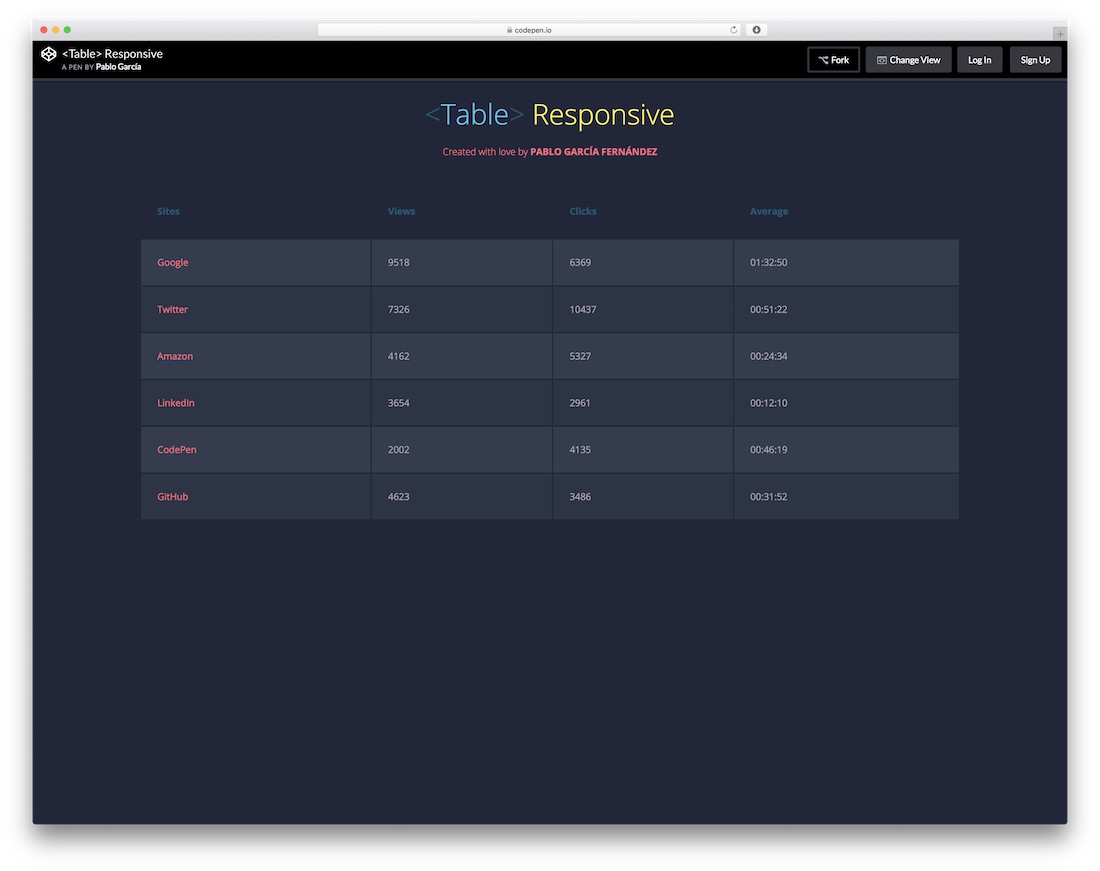

The headers attribute is very similar to the scope attribute. Item Availability Qty Price Don ’t Make Me Think by Steve Krug In Stock 1 $30.02 A Project Guide to UX Design by Russ Unger & Carolyn Chandler In Stock 2 $52.94 ($26.47 × 2) Introducing HTML5 by Bruce Lawson & Remy Sharp Out of Stock 1 $22.23 Bulletproof Web Design by Dan Cederholm In Stock 1 $30.17 Therefore, they are also beneficial to those browsing a web page using those technologies.Īdditionally, depending on the browser, table headers may receive some default styling, usually bold and centered. Using the element, along with the scope attribute, tremendously helps screen readers and assistive technologies make sense of a table. The col value indicates that every cell within the column relates directly to that table header, and the row value indicates that every cell within the row relates directly to that table header. The most commonly used values are col and row. The scope attribute indicates with the values col, row, colgroup, and rowgroup whether a table header applies to a row or column. The scope attribute helps to identify exactly what content a table header relates to.

Table headers may be used within both columns and rows the data within a table determines where the headers are appropriate. Specifically using a heading adds more semantic value to the content. While a heading’s content could be placed within a paragraph, it doesn’t make sense to do so. The difference between the two elements is similar to the difference between headings ( through elements) and paragraphs ( elements). The value to using the element over the element is that the table header element provides semantic value by signifying that the data within the cell is a heading, while the element only represents a generic piece of data. The element works just like the element in that it creates a cell for data. To designate a heading for a column or row of cells, the table header element,, should be used. See the Pen Table by Shay Howe ( on CodePen. Don ’t Make Me Think by Steve Krug In Stock 1 $30.02 A Project Guide to UX Design by Russ Unger & Carolyn Chandler In Stock 2 $52.94 ($26.47 × 2) Introducing HTML5 by Bruce Lawson & Remy Sharp Out of Stock 1 $22.23 Bulletproof Web Design by Dan Cederholm In Stock 1 $30.17 Listing multiple elements one after the other will create columns within a table row. Once a table is defined and rows within that table have been set up, data cells may be added to the table via the table data, or, element. Depending on the amount of information there is to display, the number of table rows may be substantial. A table can have numerous table rows, or elements. Once a table has been defined in HTML, table rows may be added using the element. Using the element signifies that the information within this element will be tabular data displayed in the necessary columns and rows. We use the element to initialize a table on a page. When all of these elements are working together, they produce a solid table. For greater structure and additional semantic value, tables may include the (table header) ele- ment and a few other elements as well. At a minimum a table must consist of, (table row), and (table data) elements. Tables are made up of data that is contained within columns and rows, and HTML supplies several different elements for defining and structuring these items. Then, once they’re marked up in HTML, tables need to be styled with CSS to make the information more legible and understandable to users. How a table should be built in HTML depends largely on the data and how it is to be displayed.

#Simple css table examples free
Today tables are used specifically for organizing data (like they should be), and CSS is free to get on with the jobs of positioning and layout.īuilding data tables still has its challenges. This worked at the time, but it was not what table markup was intended for, and it led to many other associated problems.įortunately, we have come a long way since then. They were used for positioning content as well as for building the overall layout of a page. When HTML was being developed, however, CSS was not widely supported in browsers, so tables were the primary means by which websites were built. HTML tables were created to provide a straightforward way to mark up structured tabular data and to display that data in a form that is easy for users to read and digest.


 0 kommentar(er)
0 kommentar(er)
